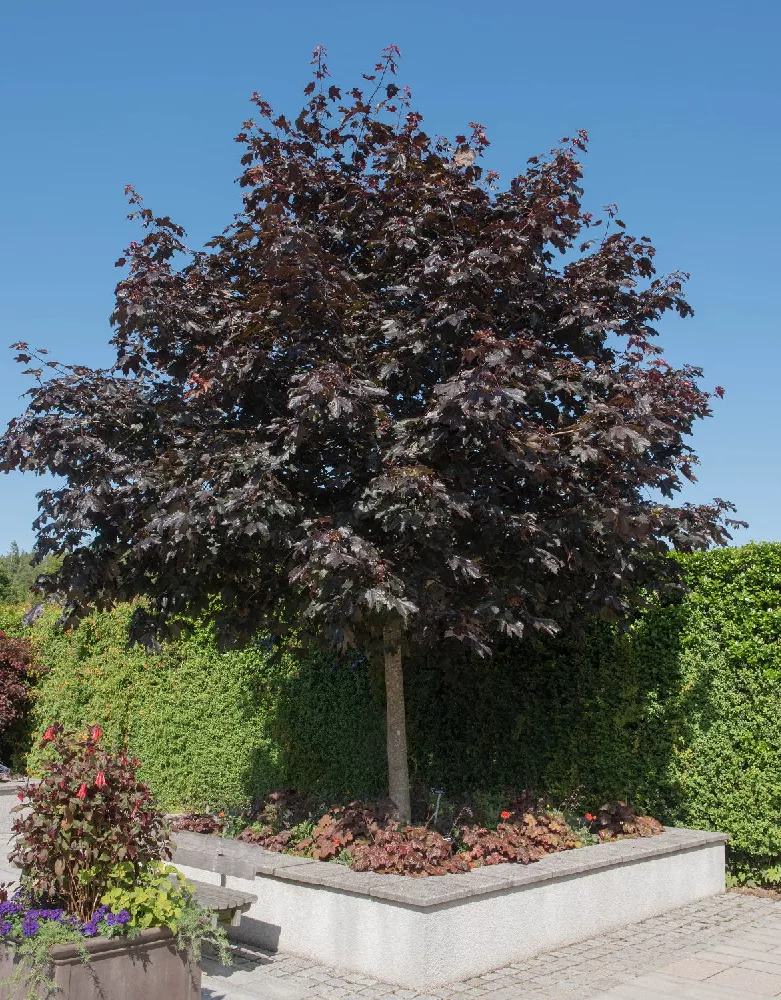- Home >
- Edible Plants >
- Lychee Trees
Lychee Trees for Sale
The lychee tree (Litchi chinensis) is a subtropical tree native to southeastern China. The iconic lychee fruit is pinkish-red and grows in clusters of up to 50 fruits. Lychee trees are evergreen and feature an exceptionally long lifespan — some specimens have lived for over 1,000 years. The tree has been prized in the Eastern world for centuries, but now enjoys worldwide cultivation. Other notable characteristics of the lychee tree include:
- Lychee trees are cold-tolerant and frost-resistant.
- After three to five years, lychee trees will start to produce fruit.
- Lychee fruit is a rich source of vitamin C.
Enter your zip code to find nearby stores that may carry this plant.
Plant Care
Sunlight

While mature lychee trees prefer full sun, younger trees grow best with some shade.
Watering
Outdoor lychee trees should be watered weekly. Lychee trees grown indoors should be watered whenever the soil is dry two inches below the surface.
Fertilizing

Fertilizer with a high phosphorus content (look for an NPK ratio of 1-2-1) is ideal for lychee trees.
Planting and Care
Planting instructions
While mature lychee trees do well in full sun, young individuals may need to be acclimated to a sunny planting site — provide a partial shade covering if necessary. When you have found your planting site, dig a hole to the depth of the tree’s root ball and three times as wide. Place the tree in the hole, keeping it upright and level. Backfill with soil and water thoroughly, making sure to penetrate the deepest roots. Add more soil if settling occurs.
Watering and nutrients
Newly transplanted lychee trees require watering every two to three days. Once the trees become established, you may reduce your watering schedule to once per week. Unlike most trees, the lychee fruit tree can be watered regularly during the winter season as they do not have a dormant period. However, be sure to avoid water-logged roots to prevent root rot. After the first flush of fruit, you may fertilize your lychee tree with organic compost or all-purpose fertilizer.
Pollination
Lychee fruit trees are considered self-pollinating and can produce fruit with just one tree. However, planting a variety of lychee tree cultivars will increase your fruit production. When grown outdoors, lychee trees will produce fruit with the natural help of insects (primarily the honey bee) and birds. If grown indoors, the lychee fruit will need to be hand pollinated. Using a small paintbrush, swirl around the inside of each flower, one by one. This should be performed daily for maximum pollination.
Pruning
You may wish to prune to maintain the shape, size, and health of the tree. It is not recommended to prune branches or limbs that are larger than one inch, as this may inhibit fruit production. Regular pruning will increase the quantity and quality of fruits produced by the tree. Trimming the tree within two weeks of harvest can ensure an excellent subsequent crop as it gives the tree time to produce new foliage and bud sites for next year. Always remove dead, dying, and diseased portions of the tree as they appear.
Pests, diseases, and animals
Pepper spot and stem canker are two fungal diseases that show up on lychee trees. Pepper spot appears on the leaves and fruit in the form of fuzzy growth, while stem cankers form irregular growths on branches. Remove infected portions of the tree immediately to stop these pathogens from spreading. It’s important to note that infected waste material should never be added to a compost heap — throw it in the trash instead. Aphids and mites are common pests that will eat away at the foliage and fruits of your lychee trees. If you spot them, try applying neem oil or an insecticidal soap to eliminate them before they proliferate.
Harvesting
In order to produce a large amount of fruits for harvesting, you will need to expose the tree to colder temperatures for approximately 100 hours during the winter season. This promotes the tree’s natural bloom and fruit cycle. The lychee fruit does not continue to ripen once it has been harvested, which makes the harvest timing more important than other fruit-bearing trees. To harvest, simply pick a cluster that is ripe and cut it off with clean pruning shears. Ripe lychee fruit can remain at room temperature for approximately five days before they start to turn.
FAQs
How large do lychee trees grow?
Lychee trees will grow to heights of 20 to 40 feet. The luscious evergreen canopy expands to 25 to 35 feet in width. Some cultivators choose to keep their lychee trees smaller by performing routine prunings. When the tree is grown in containers, the size of the pot will dictate the maximum height. The species grows at a relatively slow rate, putting on around 10 to 15 inches of new growth each year. Lychee trees may produce fruit for over 100 years, with some trees having been recorded to live to over 1,000 years old.
How long do lychee trees take to bear fruit?
Fruit production is dependent upon your region, the method of propagation, and the maturity of the lychee tree. Lychee trees propagated through cuttings or grafting will fruit about three to five years after becoming established. Lychee trees are self-fertile and do not need an additional tree in order to bear fruit. However, adding a second lychee tree cultivar is guaranteed to increase production. Growing lychee trees from seed is possible, but fruiting may take 10 to 15 years to occur with this method.
How long have lychee trees been cultivated?
Lychee trees have a long history of human cultivation. The tree was domesticated by the 11th century in China, but the wild fruits had been harvested for hundreds of years prior. The fruit had associations with royalty, with ancient emperors going to great lengths to acquire the fruit. The lychee tree made its first connection with the western world around the 16th century, when European travelers enjoyed and recorded their experiences with the fruit. It spread throughout the rest of the world in the following centuries and now enjoys widespread cultivation.
Can lychee trees be grown in containers?
Lychee trees make excellent candidates for container-grown fruits. Transplant your new tree into a pot that is at least twice the size of the root ball. Choose a container with good drainage to prevent root rot and other issues. Trees grown in containers will require more frequent waterings — if you are ever in doubt, check the soil moisture to a depth of two inches. If the soil feels dry, it's time for another watering. Growing lychee trees in containers makes it possible to produce the fruits in colder climates, as they can be brought indoors for the winter.










